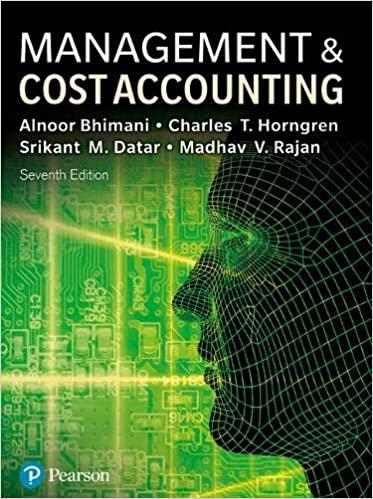Question
Scenario The island nation of Autarkais growing concerned over the amount of rubbish accumulating in the waters off its coastline. This pollution is harming marine
- Scenario
The island nation of Autarkais growing concerned over the amount of rubbish accumulating in the waters off its coastline. This pollution is harming marine life, damaging fish stocks, and washing up on tourist beaches. Research by the National University of Autarka has determined that a significant component of the solid waste is the single-use plastic bottles used by soft-drink manufacturers.
Currently, soft drink manufacturers in Autarka pay a tax of $0.40 on each bottle of drink they sell. The revenue from the tax is used to fund the cleaning of roads and public spaces. The scientific community is lobbying the government to increase the tax to $1.00 a bottle. The scientists suggest that any additional revenue could be used to fund programs to remove rubbish from the coastal waters.
There are two producers of soft drinks in Autarka: Bubbles PLCand CarbonCorp. The two companies do not face competition from imports as the cost of transporting soft drinks into Autarka is prohibitively high. Moreover, there are no cost effective alternatives to single use plastic containers. The two companies have made submissions to the government opposing the proposed tax increase, which they claim will harm consumers.
Research into the soft drink market indicates that the two firms compete by selecting quantities (Cournot competition). Soft drinks are regarded as a homogeneous good by consumers, and inverse demand in the market is estimated to be, P = 3.6 Q 100,000, where P represents the price of a bottle of soft drink, and Q is the total number of bottles sold per year. At present soft drinks sell for $2.95 a bottle. Bubbles PLC produces 40,000 bottles per year, paying $16,000 in bottle tax. CarbonCorp produces 25,000 bottles and pays $10,000. It is estimated that it costs Bubbles PLC $2.15 per bottle of soft drink produced, while producing a bottle of soft drink cost CarbonCorp $2.30. The fixed costs of production can be neglected in this analysis.
Step 1: Using the information provided in the scenario, derive a total cost function for each soft drink producer for the case in which the government levies a tax of $1.00 per bottle. Use QB to denote the quantity produced by Bubbles PLC, and QC to denote the quantity produced by CarbonCorp. Note that a firm's marginal cost will be the sum of its cost of producing a bottle, and the tax that it must pay to the government on each bottle sold.
Step 2:Using the cost functions from step 1, derive a profit function for each firm.
Step 3: Derive each firm's best-response function.
Step 4: Solve the best-response functions simultaneously to find the equilibrium quantities for each firm.
Step 5: Find the equilibrium price and tax revenue
Show All working out please
Step by Step Solution
There are 3 Steps involved in it
Step: 1

Get Instant Access to Expert-Tailored Solutions
See step-by-step solutions with expert insights and AI powered tools for academic success
Step: 2

Step: 3

Ace Your Homework with AI
Get the answers you need in no time with our AI-driven, step-by-step assistance
Get Started


